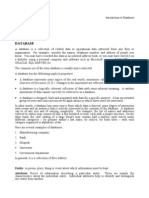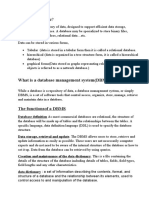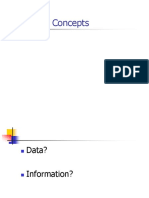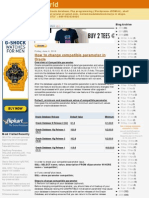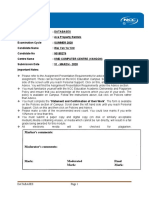0% found this document useful (0 votes)
54 views14 pagesData Dictionary
The document provides an overview of data dictionaries and system catalogs in database management systems (DBMS), highlighting their roles in storing metadata and managing data relationships. It outlines the advantages and disadvantages of data dictionaries, types of data dictionaries, and introduces Codd's rules that ensure data integrity and usability. Additionally, it explains the entity-relationship model, including entities, attributes, relationships, and their representations in ER diagrams.
Uploaded by
Priya SureshCopyright
© © All Rights Reserved
We take content rights seriously. If you suspect this is your content, claim it here.
Available Formats
Download as DOCX, PDF, TXT or read online on Scribd
0% found this document useful (0 votes)
54 views14 pagesData Dictionary
The document provides an overview of data dictionaries and system catalogs in database management systems (DBMS), highlighting their roles in storing metadata and managing data relationships. It outlines the advantages and disadvantages of data dictionaries, types of data dictionaries, and introduces Codd's rules that ensure data integrity and usability. Additionally, it explains the entity-relationship model, including entities, attributes, relationships, and their representations in ER diagrams.
Uploaded by
Priya SureshCopyright
© © All Rights Reserved
We take content rights seriously. If you suspect this is your content, claim it here.
Available Formats
Download as DOCX, PDF, TXT or read online on Scribd
/ 14
